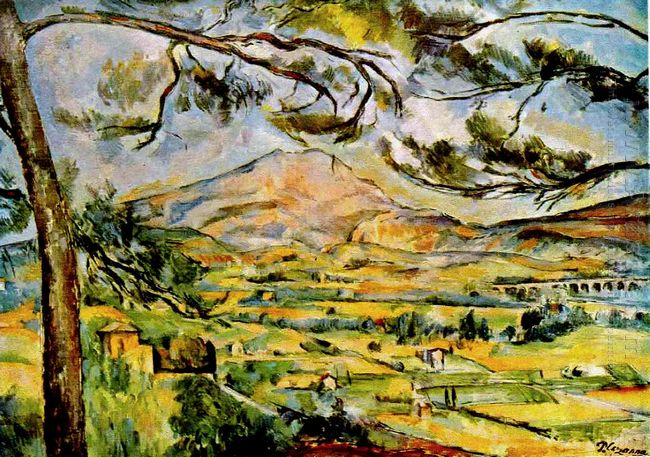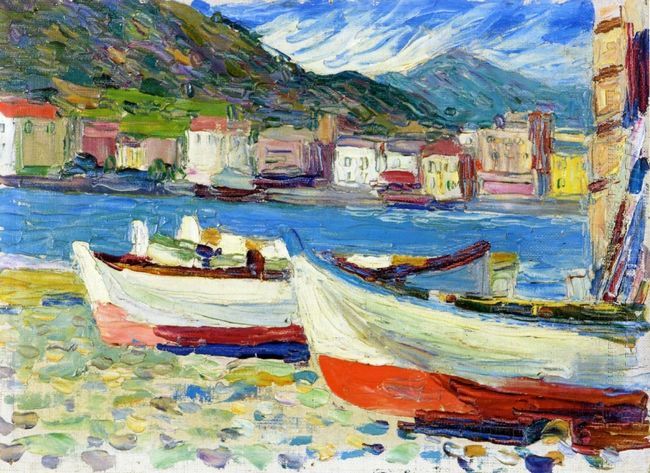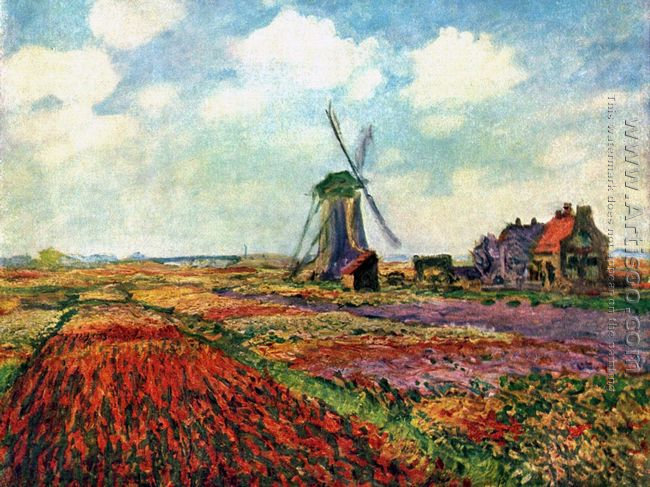Mont Sainte Victoire is located in the south of France near Paul Cezanne's hometown. In the painting, we are looking from a director of a fir tree hill to the mountain. The painting is full of strong lines which are used by Cezanne to organize his paintings. Cezanne's brushstroke is so solid. Looking at this painting, we will feel this scenery really exist in the bright sunshine. He let us feel the beauty in order.
In the middle of the painting, there is a tall fir tree, putting the painting into two halves. But this tree is not straight, but slightly tilted to the right, to make it look like swing with wind. Thus the painting looks like not too rigid. In the middle of the painting, there is a viaduct from left to right, sloping slightly downward. In order to balance the painting, Cezanne draws another group of fir trees on the left with straight lines, like a wedge into the left side of the painting.
In the lower part, it is a rocky hill on the gray and pink, with different shades of green to depict the pine. The roof uses the orange and grey, and the small pond is a sky-blue. In the plains, Cezanne uses green and orange of different shades to show room, vegetable and harvested wheat.
Looking forward, Mont Sainte Victoire is in the edge of green fir canopy. The left part of the mountain is light red. The mountain looks bare and the right part is a piece of very cold blue, there should be a dense forest. The top of the mountain is the warm blue sky where clouds are floating.
After 1890, Paul Cezanne’s strokes have changed a lot and present more abstract expressions. Contour line is also more broken and more relaxed. Colors are floating in the object to maintain their independence from the outside. These tendencies have led to his those wonderful free paintings in his last years. Mont Sainte Victoire is such a kind of masterpiece painting. Brush takes a role as an excellent Symphony soloist here. Each stroke according to its function is very suitable for existence in the picture, but subject to the overall harmony. There is also existing structure and lyricism in this painting. People can see, the artist has achieved the combination of classicism, romanticism, structure, color, nature and painting. It belongs to great tradition of the Renaissance and Baroque landscapes. However, as seen by the eyes, it is considered as a great accumulation of personal perception. The artist will decompose these into abstract composition and reorganize into the real new paintings.






